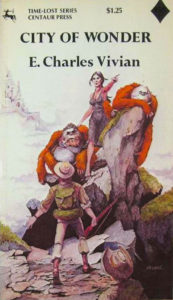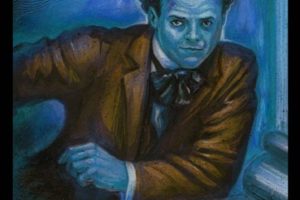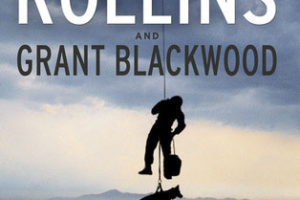 I have previously posted on the Gees series of supernatural detectives stories by Jack Mann, a pseudonym of Charles Henry Cannell (1882-1947) who also wrote a lot of works under the name of E. Charles Vivian (which is a name he went under most of his life). In particular, under this name he wrote several lost-world/lost-race novels, most of which are out of print.
I have previously posted on the Gees series of supernatural detectives stories by Jack Mann, a pseudonym of Charles Henry Cannell (1882-1947) who also wrote a lot of works under the name of E. Charles Vivian (which is a name he went under most of his life). In particular, under this name he wrote several lost-world/lost-race novels, most of which are out of print.
One in particular I wanted to get was City of Wonder (1922). I wanted to read it because it was referenced in the third Gees novel, Nightmare Farm. The novel was reprinted in Famous Fantastic Mysteries in 1947 as a cover feature, and later reprinted in Centaur Press’s Time-Lost Series of paperbacks in the 1970s. It’s that edition that I have.
It seems the typical lost-world story. A trio of explorers set out to find Kir-Asa, the “City of Wonder” of the title. It is a hidden city in the jungles of Southeast Asia with the remnants of lost Lemuria, a lost Pacific Continent (usually called Mu). While not clear, it seems that it’s located somewhere in Borneo, and the explorers must overcome the swamps and jungles just to get close to it.
The trio are Cecil Bent, Jack Faulkner (our narrator), and Philip Watkins, who is the leader of the group, knowledgable about the area, and has some information on the city. In the marshes, they find a stone causeway that should lead them straight to the city, though they face vampire bats and an earthquake-caused chasm they must cross. At the chasm, they find a cave with bones and a strange inscription, which makes a few things clear.
Watkins is after the city because a relative back in the late 1700s went in search of it. It is his bones and inscription they find, which tells of the hardships he and his followers went through to get to the city, and how he was the only one to return, to die in that cave.
Now armed with more knowledge of what they may face to get to the city, the trio hash things out and decide to move on. They first must get over the chasm by climbing down and back up, and it’s not an easy thing. Next, they pass through an area where they are menaced by a strange group of ghostly creatures. This leads to an interesting philosophical aside where Watkins discusses his idea of where they came from in the far distant past of Lemuria, which predates Atlantis. It’s these and similar digressions in the Gees series that I think elevate it above the usual fare.
Next, they deal with a woman who strangely commands a group of large apes that seem more like orangutans. They serve as a kind of guard against tribes from the West. This scene is used for the cover artwork of the Centaur Press work. The group must resort to violance to continue on, which will have severe ramifications later on. That done, they seem to come closer to their goal, seeing fields being cultivated.
When they meet the people, they are surprised by the reverance shown Watkins. When they met the regional governor Ner-Ag, they learn why. He is almost a twin to Watkins! It appeared that his kinsman had been a bit more involved in Kir-Asa than they knew, and that the governor and Watkins are distant relatives. This helps in their acceptance. Faulkner also takes an interest in the governor’s daughter, named Eve.
They learn that Kir-Asa is in a decline. The birthrate is low, and the people are peaceful and largely agricultural. Their king Saya Comin is insane, but his first son cannot take his place while he lives. So a council of five rule, one as a governor of the city, the other four are over areas outside the city. The one from the west, Ner-Ag, is whom the party has met. They learn that the current people inhabiting Kir-Asa did not built it. They are the third group, or race, to do so, and are also making use of the great store of metals left behind. This is no super-science lost city, instead they have lost much knowledge from the past.
Like many such lost-world stories, there is a brewing issue that our visitors will cause to boil over. And there is always a girl involved. So it happens here. As the current king is thought to pass away soon, his oldest son (of three) will take over. And he wants Eve as his wife, which Ner-Ag isn’t keen on. The king’s family has been plagued with madness. There is also the matter of what happened to the monkey woman.
Will all survive? Will they be able to leave, hopefully with the girl? You’ll have to read to find out.
At the end, Faulkner has somehow gotten out, and has written everything down, which is sent to Watkin’s family, who publishes it in hopes more info will come out. A map was to be included with the journal, but is missing. So we get the idea this is a true story, just with information missing to prove it.
I was hoping to understand where the ghostly creatures seen in Nightmare Farm came from, and can only assume they were one of the ghostly entities seen on the trip to Kir-Asa. Thus, someone else had somehow made it close to the city and left, taking some ghostly entities with them. As they are a threat to women, this kind of fits what happened there.
Vivian also wrote several other lost-world stories, most of which have yet to be reprinted. There is the “Aia” sequence of Fields of Sleep (1922) and its sequel, People of the Darkness (1924). Fields tells of a remnant group of Babylonians in Malyasia, who must remain there or die due to having inhaled a flower. People is set underground, and deals with a race of tentacled people who were slaves in Atlantis. I’m not sure how they are connected. Fields was cover featured in Famous Fantastic Mysteries in 1949. The pair was reprinted by Arno as Aia.
Then there is The Lady of the Terraces (1925) and its sequel A King There Was (1926), both of which deal with a group of pre-Incan survivors and hints of Atlantis. Ramble House has reprinted The Lady, but not A King. Arno reprinted A King, but it’s out of print. I wish Ramble House would reprint it as well.
And then there is Woman Dominant (1929), set in Asia were an aged woman rules a land using a drug to keep men enthralled. It’s never been reprinted since its original publication.
I wish these would be reprinted by someone today, such as Armchair Theater in its Lost World/Lost Race series. Sadly, it seems like his estate isn’t bothering to keep his works in print.
UPDATE
Since this was posted, Armchair Fiction has reprinted City of Wonder in their Lost World/Lost Race series, as #36. But I have no idea the source of the cover artwork. I guess they couldn’t use the artwork from the Centaur Press edition, but wished they had used the cover from Famous Fantastic Mysteries. Am still hoping they might reprint of Charles Vivian’s other lost world stories.




Interesting. I assume you are already familiar with Roy Glashan’s site
http://freeread.com.au/@RGLibrary/ECVivian/@ECVivian.html
I’m not, but will check it out.